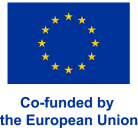Kotimaisten malmien vetypelkistys - Hydrogen reduction of domestic ores
Project information
Project duration
-
Funded by
Other Finnish
Project funder
Funding amount
520 723 EUR
Project coordinator
University of Oulu
Unit and faculty
Contact information
Contact person
Project description
In this project, Kotimaisten malmien vetypelkistys - Hydrogen reduction of domestic ores, scientific research and testing work will be executed for developing of novel, sustainable electricity-based and hydrogen reduction-based process flow sheet for refining of iron and vanadium pentoxide from vanadium containing iron ore concentrates having varying titanium contents. High-titanium Mustavaara and low-titanium Otanmäki concentrates are used as case-studies. The purpose is to create fundamental phenomena-level knowledge about hydrogen-based reduction and electric arc furnace smelting of titanium and vanadium contain iron ore (magnetite) concentrates, and extraction of vanadium from the slag. This requires a major technology and sustainability improvement involving deep scientific understanding, creation of new know-how, and re-thinking of the technical matters. The final purpose is to enable the opening of some domestic mining and concentration operations at the mine sites. The concentrates could be transported to e.g. Raahe for hydrogen reduction and electric arc furnace smelting as well as extraction of vanadium from the slag. It is estimated that this novel flow sheet will create appr. 500-600 new direct jobs in the mines, concentrator, hydrogen reduction plant, smelter, and vanadium extraction plant. Extra work force is needed for related transportation and maintenance operations.
The research in the project will be conducted in six work packages:
WP1 – Hydrogen reduction technologies (MET)
Literature survey on different hydrogen reduction technologies.
WP2 – Agglomeration and sintering (MET)
Agglomeration and high-temperature sintering of concentrates in oxidizing atmosphere. Optimization of pellet properties, slag and vanadium distribution.
WP3 – Optimization of hydrogen reduction (MET)
Optimization of hydrogen reduction for different pellets taking into account a composition of slag, process temperature and time, H2 content in reducing gas etc.
WP4 – Electric melting of reduced pellets (MET)
Electric melting of reduced pellets for separating metal and slag. Optimization of final slag composition for favorable vanadium distribution. Controlled slow cooling of slag for obtaining suitable grain size.
WP5 – Hydrometallurgical extraction of vanadium from the slag (SUSCHEM)
Development of a sustainable hydrometallurgical vanadium leaching and recovery process that aims for a maximal vanadium yield and produces an inert residual precipitate as a side stream, which can be employed e.g. as a raw material of concrete.
WP6 – Sustainability and feasibility assessment (MET + SUSCHEM)
Evaluation of the emissions of the described process (WP2-WP5) chain and comparison to current technology. Preliminary assessment of the economical viability when producing iron and vanadium pentoxide.

